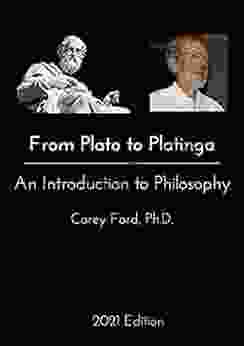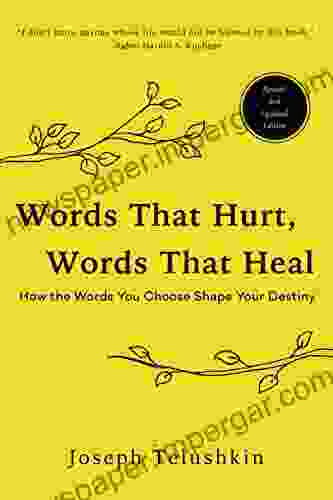Self Consolidating Concrete: Applying What We Know

Self Consolidating Concrete (SCC) has emerged as a game-changer in the construction industry, revolutionizing the way concrete structures are built. Unlike traditional concrete, SCC exhibits remarkable flowability and self-leveling properties, allowing it to fill complex formwork and eliminate the need for mechanical consolidation. This unique material offers a plethora of benefits, including improved structural performance, reduced labor costs, enhanced durability, and increased sustainability.
5 out of 5
| Language | : | English |
| File size | : | 62340 KB |
| Print length | : | 304 pages |
Exceptional Properties of SCC
The exceptional properties of SCC stem from its high fluidity, which is achieved through the use of chemical admixtures, such as superplasticizers and viscosity-modifying agents. These admixtures reduce the water content of the concrete, enabling it to flow easily under its weight. SCC exhibits excellent self-leveling capabilities, allowing it to fill even the most intricate formwork without any external vibration or compaction.
SCC is known for its high strength and durability. The absence of entrapped air and voids ensures a denser and more cohesive concrete matrix, resulting in enhanced mechanical properties. Additionally, SCC's superior flowability allows for better compaction around reinforcement bars, leading to improved bond strength and overall structural integrity.
Applications of SCC
SCC finds application in a wide range of construction projects, including:
- High-rise buildings
- Bridge decks
- Tunnels
- Precast concrete elements
- Architectural concrete
SCC is particularly well-suited for projects with complex geometries or congested reinforcement, where traditional concrete would be difficult to place and compact. Its self-leveling properties make it ideal for applications where a smooth, uniform surface finish is required.
Best Practices for SCC
To ensure the successful implementation of SCC, it is crucial to adhere to best practices:
- Proper mix design: The mix design should be carefully engineered to achieve the desired flowability, strength, and durability.
- Quality control: Strict quality control measures must be implemented to ensure consistency and compliance with specifications.
- Placement techniques: Skilled workers and proper placement techniques are essential to prevent segregation and maintain the flowability of SCC.
- Curing: Proper curing practices are crucial to ensure the development of optimal concrete properties.
By following these best practices, engineers can harness the full potential of SCC and achieve superior concrete structures.
Case Studies and Innovations
Numerous case studies have demonstrated the remarkable benefits of SCC in various construction projects:
- Burj Khalifa, Dubai: SCC was used extensively in the construction of this iconic skyscraper, contributing to its exceptional height and structural integrity.
- Stonecutters Bridge, Hong Kong: SCC played a crucial role in the construction of this cable-stayed bridge, enabling the placement of concrete in highly congested areas.
- Sydney Opera House, Australia: SCC was employed in the restoration of the iconic roof shells, ensuring a seamless and durable finish.
Ongoing research and development efforts are continuously expanding the applications of SCC. Recent innovations include:
- Ultra-high performance SCC: This advanced type of SCC boasts exceptional strength and durability, making it suitable for demanding applications.
- Self-healing SCC: This innovative material incorporates agents that can repair cracks over time, enhancing the long-term durability of concrete structures.
These advancements are pushing the boundaries of concrete technology and paving the way for even more transformative applications in the future.
Self Consolidating Concrete represents a paradigm shift in concrete construction, offering a multitude of benefits and enabling engineers to push the boundaries of design and innovation. By fully understanding the properties, applications, and best practices of SCC, engineers can unlock its true potential and create structures that are not only stronger and more durable but also more sustainable and aesthetically pleasing. The future of concrete construction lies in the continued exploration and development of SCC, promising a brighter tomorrow for the industry.
5 out of 5
| Language | : | English |
| File size | : | 62340 KB |
| Print length | : | 304 pages |
Do you want to contribute by writing guest posts on this blog?
Please contact us and send us a resume of previous articles that you have written.
 Book
Book Novel
Novel Page
Page Chapter
Chapter Text
Text Story
Story Genre
Genre Reader
Reader Library
Library Paperback
Paperback E-book
E-book Magazine
Magazine Newspaper
Newspaper Paragraph
Paragraph Sentence
Sentence Bookmark
Bookmark Shelf
Shelf Glossary
Glossary Bibliography
Bibliography Foreword
Foreword Preface
Preface Synopsis
Synopsis Annotation
Annotation Footnote
Footnote Manuscript
Manuscript Scroll
Scroll Codex
Codex Tome
Tome Bestseller
Bestseller Classics
Classics Library card
Library card Narrative
Narrative Biography
Biography Autobiography
Autobiography Memoir
Memoir Reference
Reference Encyclopedia
Encyclopedia Jonathan Seaman
Jonathan Seaman John Hollway
John Hollway John Espirian
John Espirian John J Bukowczyk
John J Bukowczyk John Mayer
John Mayer John F Robyt
John F Robyt Jon Andre Lundal
Jon Andre Lundal Jonah Paquette
Jonah Paquette Joseph Kostiner
Joseph Kostiner John Skelton
John Skelton John W Creswell
John W Creswell John Riselvato
John Riselvato Jonathan Clayden
Jonathan Clayden Jones Loflin
Jones Loflin John M Spores
John M Spores John T Moore
John T Moore John I Pitt
John I Pitt Jon Najarian
Jon Najarian John R Butterly
John R Butterly John Russell Young
John Russell Young
Light bulbAdvertise smarter! Our strategic ad space ensures maximum exposure. Reserve your spot today!

 Harrison BlairFrom Transaction to Litigation: A Comprehensive Guide for Legal Practitioners
Harrison BlairFrom Transaction to Litigation: A Comprehensive Guide for Legal Practitioners
 Christopher WoodsUnleash the Potential of Ferroalloys: A Comprehensive Guide to Processing...
Christopher WoodsUnleash the Potential of Ferroalloys: A Comprehensive Guide to Processing... Cormac McCarthyFollow ·14.2k
Cormac McCarthyFollow ·14.2k James GrayFollow ·4k
James GrayFollow ·4k Adrien BlairFollow ·14.2k
Adrien BlairFollow ·14.2k Herbert CoxFollow ·8.7k
Herbert CoxFollow ·8.7k Logan CoxFollow ·11.8k
Logan CoxFollow ·11.8k Austin FordFollow ·9.5k
Austin FordFollow ·9.5k Glen PowellFollow ·6.7k
Glen PowellFollow ·6.7k Ira CoxFollow ·6.9k
Ira CoxFollow ·6.9k

 Jake Powell
Jake PowellThe Constitution of the State of Colorado: A Legacy of...
Since its adoption in 1876, the...

 Devin Ross
Devin RossFrom Plato to Plantinga: A Journey Through the History of...
Philosophy is the study of...

 Robin Powell
Robin PowellWords That Hurt, Words That Heal: The Power of Language...
Words are powerful. They can...

 T.S. Eliot
T.S. EliotTantalize Your Taste Buds with Over 90 Low-Carb Ethnic...
Indulge in a Culinary Adventure with "Over...
5 out of 5
| Language | : | English |
| File size | : | 62340 KB |
| Print length | : | 304 pages |












